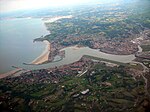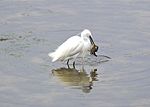Hendaye

Hendaye (French pronunciation: [ɑ̃daj]; Basque: Hendaia, Spanish: Hendaya) is a commune in the Pyrénées-Atlantiques department and Nouvelle-Aquitaine region of southwestern France.The town, Metropolitan France's most southwesterly and a popular seaside tourist resort, stands on the right bank of the River Bidassoa – which marks the Franco-Spanish border – at the point where it empties into the Atlantic Ocean in the French Basque Country. Hendaye has three distinguishable parts: la ville (the town), which stretches from Saint Vincent's church to the area around the SNCF railway station and the industrial zone; la plage (the beach), the seaside quarter; and les hauteurs (the heights), the villas and camping sites on the hills between and behind the other two areas.
Excerpt from the Wikipedia article Hendaye (License: CC BY-SA 3.0, Authors, Images).Hendaye
Passage Ouristycolanda, Bayonne
Geographical coordinates (GPS) Address Nearby Places Show on map
Geographical coordinates (GPS)
| Latitude | Longitude |
|---|---|
| N 43.36 ° | E -1.77 ° |
Address
Passage Ouristycolanda
64700 Bayonne, Urrizti
Nouvelle-Aquitaine, France
Open on Google Maps











